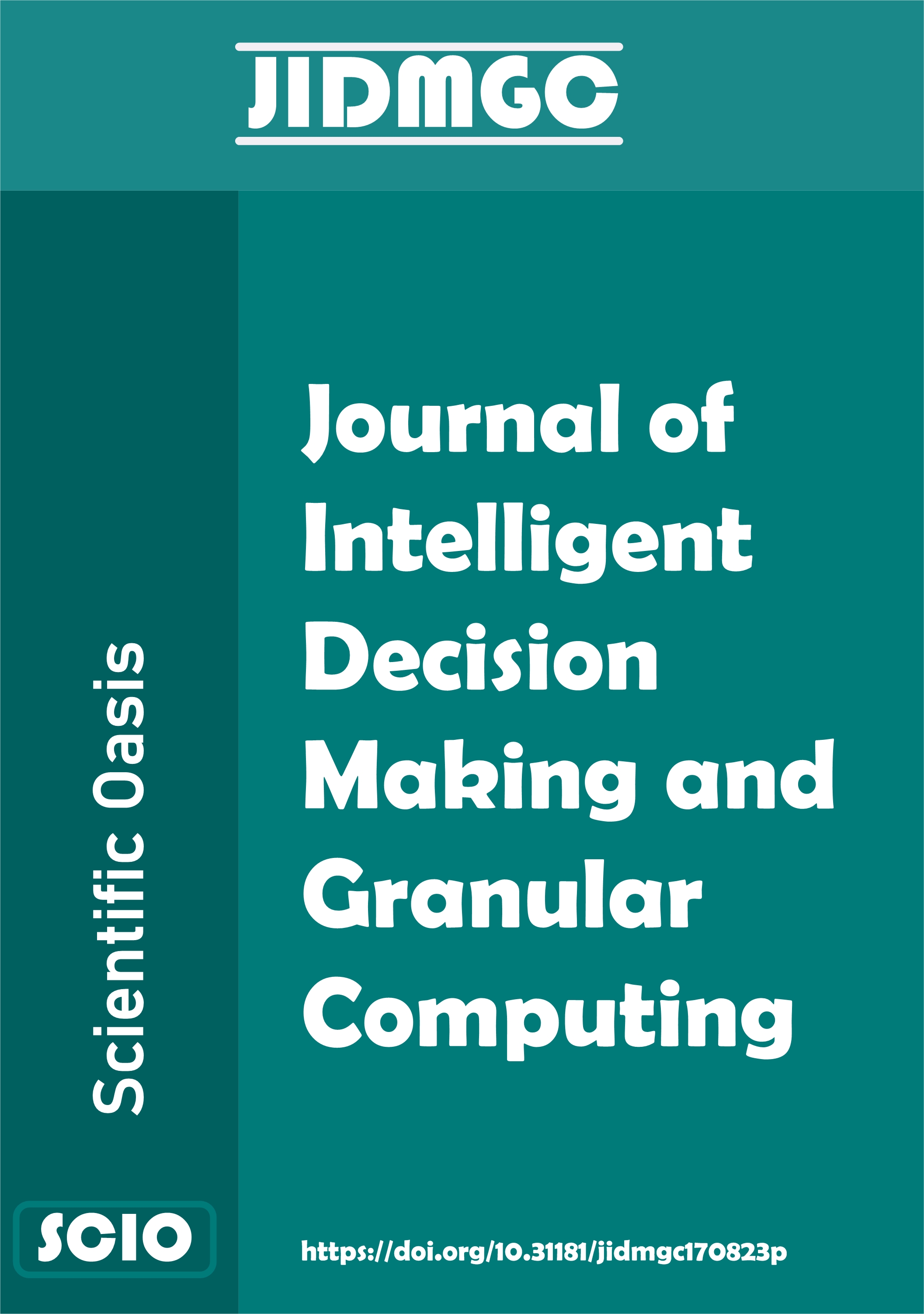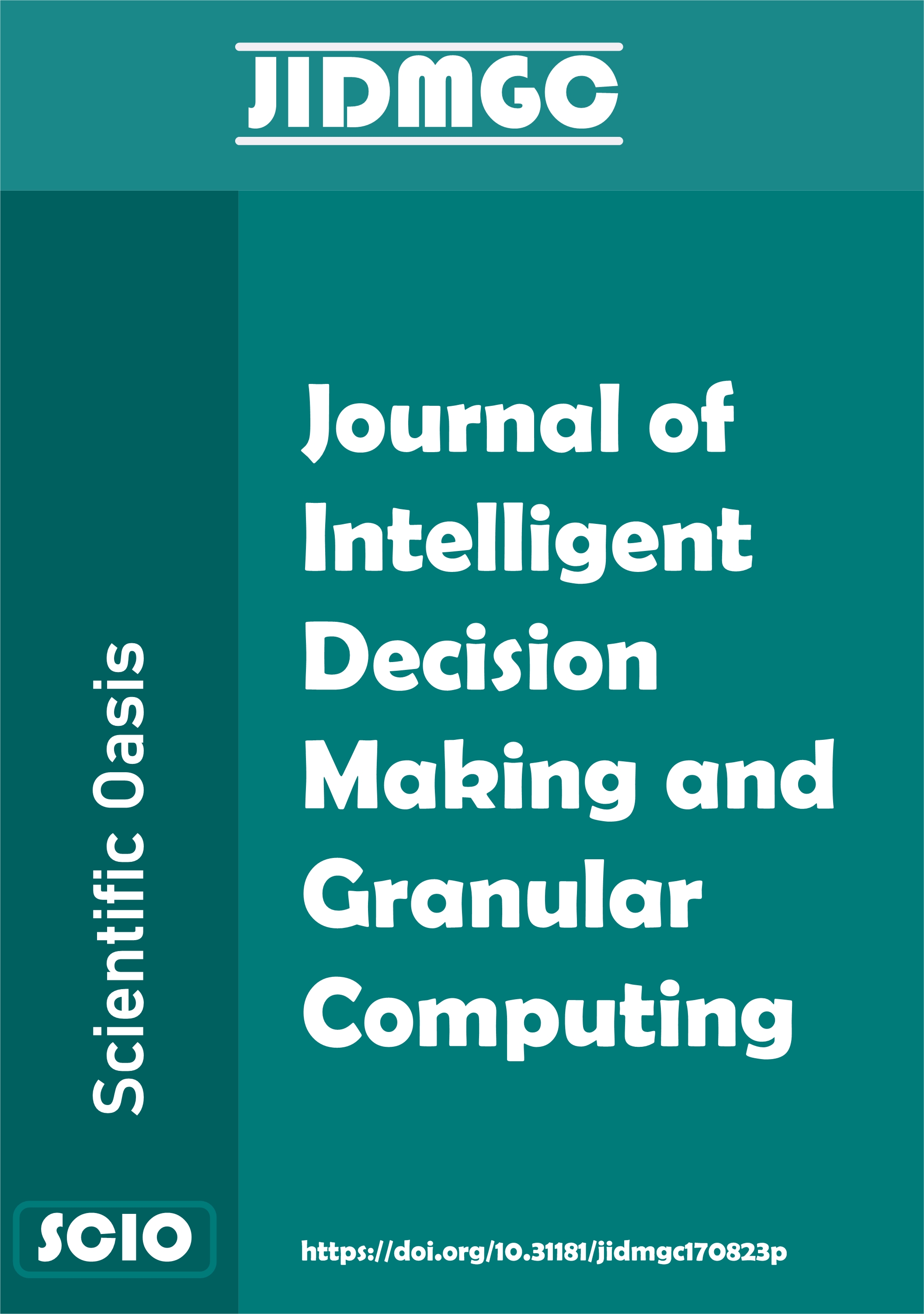Multi-Period MIP Models for Real-Time Scheduling and Resource Allocation in Digital Twin-Enabled Systems
DOI:
https://doi.org/10.31181/jidmgc1120252Keywords:
Multi-period scheduling, Mixed-Integer Programming (MIP), Real-time resource allocation, Digital Twin, Cyber-physical systems, Smart manufacturing, Dynamic optimization, Production planning, Industrial Internet of Things (IIoT), Operational efficiencyAbstract
The use of Digital Twin (DT) technology in advanced industrial systems enables us to have better real-time monitoring, control, and optimization of complex processes. This paper presents new multi-period mixed-integer programming (MIP) models that can solve the problems of real-time scheduling and resource allocation in Digital Twin-based environments. The new models include dynamic system behavior across a number of different time periods with resource capacity constraints, task precedence, and working deadlines. Taking advantage of the real-time data streams from Digital Twins, the models learn and adapt to system variations and uncertainty to facilitate optimal decision-making for resource utilization and production efficiency. Computational experimentation on conventional case studies demonstrates the practicability and scalability of the approach and its potential to increase responsiveness and operational efficiency in cyber-physical systems and smart manufacturing.
Downloads
References
Li, Y., Liu, M., Saldanha-da-Gama, F., & Yang, Z. (2024). Risk-averse two-stage stochastic programming for assembly line reconfiguration with dynamic lot sizes. Omega, 127, 103092. https://doi.org/10.1016/j.omega.2024.103092
Hosseini-Motlagh, S. M., Samani, M. R. G., & Rahmani, M. (2025). A digital twin framework integrated with a mixed proactive-reactive model for human milk supply chain planning. International Journal of Production Economics, 109683. https://doi.org/10.1016/j.ijpe.2025.109683
Nardini, G., & Stea, G. (2024). Enabling simulation services for digital twins of 5G/B5G mobile networks. Computer Communications, 213, 33–48. https://doi.org/10.1016/j.comcom.2023.10.017
Wallrath, R., Seeanner, F., Lampe, M., & Franke, M. B. (2023). A time-bucket MILP formulation for optimal lot-sizing and scheduling of real-world chemical batch plants. Computers & Chemical Engineering, 177, 108341. https://doi.org/10.1016/j.compchemeng.2023.108341
Yang, Y., Peng, C., & Cao, E. Z. (2025). Design of supply chain resilience strategies from the product life cycle perspective. International Journal of Production Economics, 282, 109532. https://doi.org/10.1016/j.ijpe.2025.109532
Ye, W., Yang, S., & Li, X. (2025). A bi-level supply chain resilience model using cloud manufacturing. Journal of Manufacturing Systems, 80, 662–672. https://doi.org/10.1016/j.jmsy.2025.03.020
Ghosh, A., & Abawajy, J. (2025). Optimising concreting equipment operations in India: An artificial intelligence and reliability-based approach. Expert Systems with Applications, 271, 126672. https://doi.org/10.1016/j.eswa.2025.126672
Pitakaso, R., Sethanan, K., Gonwirat, S., Chien, C. F., Lim, M. K., & Tseng, M. L. (2025). Energy-efficient tugboat scheduling: A hybrid transformer-attention mechanism and artificial multiple intelligence system. Computers & Industrial Engineering, 204, 111112. https://doi.org/10.1016/j.cie.2025.111112
Pitakaso, R., Sethanan, K., Chamnanlor, C., Fan, S. K. S., Tseng, M. L., & Lim, M. K. (2025). Optimizing floating crane operations for efficient bulk product transshipments on inland waterways. International Journal of Production Economics, 279, 109469. https://doi.org/10.1016/j.ijpe.2024.109469
MajidiParast, S., Monemi, R. N., & Gelareh, S. (2025). A graph convolutional network for optimal intelligent predictive maintenance of railway tracks. Decision Analytics Journal, 14, 100542. https://doi.org/10.1016/j.dajour.2024.100542
Wang, W., Fei, W., Bilal, M., & Xu, X. (2024). Adaptive ubiquitous learning for server deployment and distributed offloading in UAV-enhanced IoV. Computers in Human Behavior, 161, 108393. https://doi.org/10.1016/j.chb.2024.108393
Gartner, M. A., Grenzfurtner, W., Zauner, B., & Gronalt, M. (2024). Job and product rotation for maximising the production output on multi mixed-model assembly lines for element prefabrication in industrialised housebuilding. Computers & Industrial Engineering, 190, 110041. https://doi.org/10.1016/j.cie.2024.110041
Dönmez, K. (2024). Airport Ground Optimizer (AGO): A decision support system initiative for air traffic controllers with optimization and decision-aid algorithms. Journal of Air Transport Management, 119, 102648. https://doi.org/10.1016/j.jairtraman.2024.102648
Kumar, D., Soni, G., Mangla, S. K., Liao, J., Rathore, A. P. S., & Kazancoglu, Y. (2024). Integrating resilience and reliability in semiconductor supply chains during disruptions. International Journal of Production Economics, 276, 109376. https://doi.org/10.1016/j.ijpe.2024.109376
Castiglione, A., Cimmino, L., Nardo, M. D., & Murino, T. (2024). Optimising production efficiency: Managing flexibility in Industry 4.0 systems via simulation. Computers & Industrial Engineering, 197, 110540. https://doi.org/10.1016/j.cie.2024.110540
Sheikh, Z. A., Singh, Y., Singh, P. K., & Ghafoor, K. Z. (2022). Intelligent and secure framework for critical infrastructure (CPS): Current trends, challenges, and future scope. Computer Communications, 193, 302–331. https://doi.org/10.1016/j.comcom.2022.07.007
Lian, Y., Yang, Q., Liu, Y., & Xie, W. (2022). A spatio-temporal constrained hierarchical scheduling strategy for multiple warehouse mobile robots under industrial cyber–physical system. Advanced Engineering Informatics, 52, 101572. https://doi.org/10.1016/j.aei.2022.101572
Gong, X., De Pessemier, T., Martens, L., & Joseph, W. (2019). Energy- and labor-aware flexible job shop scheduling under dynamic electricity pricing: A many-objective optimization investigation. Journal of Cleaner Production, 209, 1078–1094. https://doi.org/10.1016/j.jclepro.2018.10.289
Buckhorst, A. F., Grahn, L., & Schmitt, R. H. (2022). Decentralized holonic control system model for line-less mobile assembly systems. *Robotics and Computer-Integrated Manufacturing, 75*, 102301. https://doi.org/10.1016/j.rcim.2021.102301
Wang, T., Cheng, P., & Zhen, L. (2023). Green development of the maritime industry: Overview, perspectives, and future research opportunities. Transportation Research Part E: Logistics and Transportation Review, 179, 103322. https://doi.org/10.1016/j.tre.2023.103322
Sudan, T., Taggar, R., Jena, P. K., & Sharma, D. (2023). Supply chain disruption mitigation strategies to advance future research agenda: A systematic literature review. Journal of Cleaner Production, 425, 138643. https://doi.org/10.1016/j.jclepro.2023.138643
Guarnaschelli, A., Salomone, H. E., & Méndez, C. A. (2020). A stochastic approach for integrated production and distribution planning in dairy supply chains. Computers & Chemical Engineering, 140, 106966. https://doi.org/10.1016/j.compchemeng.2020.106966
Yeni, F. B., Yılmaz, B. G., Özçelik, G., Yılmaz, Ö. F., & Kalaycıoğlu, O. (2025). Revealing risk mitigation strategies for supply chain resilience in aquaculture industry through a methodology equipped with lean tools and stochastic programming. Computers & Industrial Engineering, 205, 111157. https://doi.org/10.1016/j.cie.2025.111157
Ma, H. L., Sun, Y., Chung, S. H., & Chan, H. K. (2022). Tackling uncertainties in aircraft maintenance routing: A review of emerging technologies. Transportation Research Part E: Logistics and Transportation Review, 164, 102805. https://doi.org/10.1016/j.tre.2022.102805
Geurtsen, M., Adan, I., & Atan, Z. (2024). Planning of multi-production line maintenance. Journal of Manufacturing Systems, 75, 174–193. https://doi.org/10.1016/j.jmsy.2024.06.003
Hamou, K. A. B., Jarir, Z., & Elfirdoussi, S. (2025). Using machine learning for production scheduling problems in the supply chain: A review. Computers & Industrial Engineering, 111243. https://doi.org/10.1016/j.cie.2025.111243
Darchini-Tabrizi, M., Pakdaman-Donyavi, A., Entezari-Maleki, R., & Sousa, L. (2025). Performance enhancement of UAV-enabled MEC systems through intelligent task offloading and resource allocation. Computer Networks, 264, 111280. https://doi.org/10.1016/j.comnet.2025.111280
Downloads
Published
Issue
Section
License
Copyright (c) 2025 Safiye Turgay, Nimet Merve Telçeken (Author)

This work is licensed under a Creative Commons Attribution 4.0 International License.













 All site content, except where otherwise noted, is licensed under the
All site content, except where otherwise noted, is licensed under the 